Rosetta mission ends in comet collision
- Published
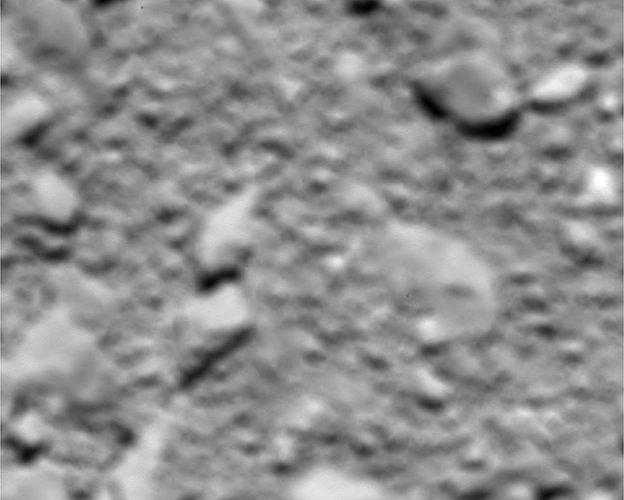
Rosetta's last image of Comet 67P, taken from a little over 20m above the surface
Europe's Rosetta probe has ended its mission to Comet 67P by crash-landing on to the icy object's surface.
Mission control in Darmstadt, Germany, was able to confirm the impact had occurred when radio contact to the ageing spacecraft was lost abruptly.
The assumption is that the probe would have been damaged beyond use.
In the hours before the planned collision, Rosetta sent back a host of high-resolution pictures and other measurements of the icy dirt-ball.
"I can announce full success of this historic descent of Rosetta towards Comet 67P," said European Space Agency mission manager Patrick Martin.
"Farewell Rosetta; you've done the job. That was space science at its best."
Researchers expect all the data gathered at 67P in the past two years to keep them busy for decades to come.
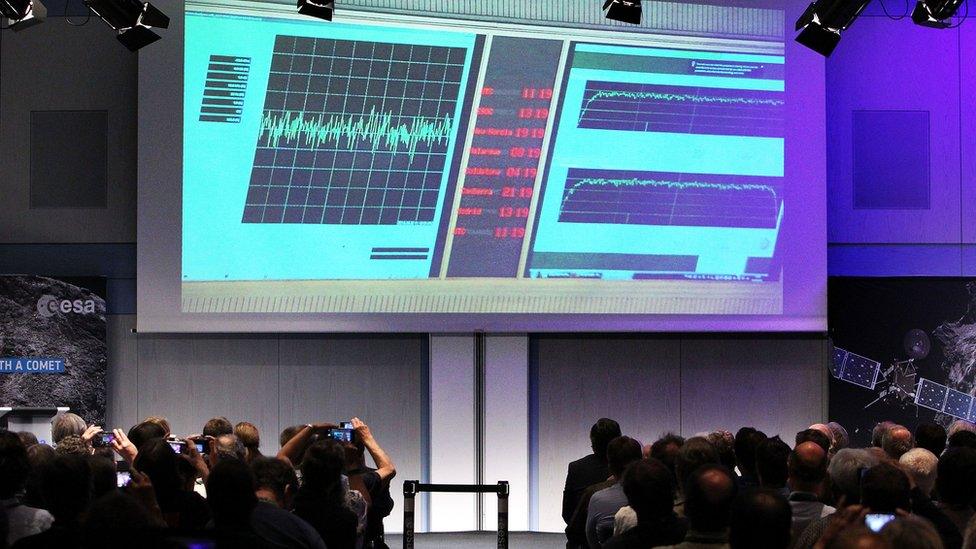
Rosetta's radio link flatlines. It should have a tall green spike in the middle of the carrier frequency

It was an emotional occasion for everyone connected with the mission
The loss of signal, which happened at 11:19 GMT (12:19 BST; 13:19 CEST), was greeted by muted cheers and handshakes - not so surprising given the bittersweet nature of the occasion.
Some of the scientists watching on here in Darmstadt have spent the better part of 30 years on this project.
"People are very sad today but I think they really understand how proud we are and how proud they should be that we've pulled this mission off," said Esa's senior science advisor, Mark McCaughrean.
Prof Monica Grady from the Open University reacts as Rosetta completes its mission
Throughout Friday morning, the instrument teams had followed every twist and turn as the probe aimed for a touchdown spot on the head of the 4km-wide, duck-shaped comet.
The researchers had wanted the descending probe to get a look inside one of the many pits that pockmark the surface.
These sinkholes are often the places where 67P ejects gas and dust into space. But they also afford an opportunity to look at the object's interior, to see the lumpy ice blocks that may have come together to build the comet billions of years ago.
Some of the images that came back were acquired just seconds before the collision. These pictures will have resolutions that can be measured in millimetres. "They're super-duper," enthused Holger Sierks, the head of the Osiris camera team. "I've got goosebumps just thinking about all this," he told BBC News.

The comet is heading out towards Jupiter. Light falling on its solar panels was diminishing to the point where it would no longer have been able to operate all its instruments

Comet 67P/Churyumov-Gerasimenko - to give the object its full name - is currently heading away from the Sun, limiting the solar energy available to Rosetta to operate its systems.
Rather than put the probe into hibernation or simply let it slowly fade into inactivity, the mission team determined that the venture should try to go out with a bang.
European Space Agency project scientist Matt Taylor said that even if Rosetta was sent to sleep with the intention of waking it up again when 67P next visited the brighter environs of the inner Solar System - there was no guarantee the technology would still be working properly.
"It's like one of those 60s rock bands; we don't want to have a rubbish comeback tour. We'd rather go out now in true rock'n'roll style," he said just before the impact.
Because Rosetta was not designed to land, some of its structures very likely broke on contact with the comet. Controllers left no room for doubt in any case by pre-loading a software sequence that would jump the computers into a shutdown when the probe felt a big jolt.
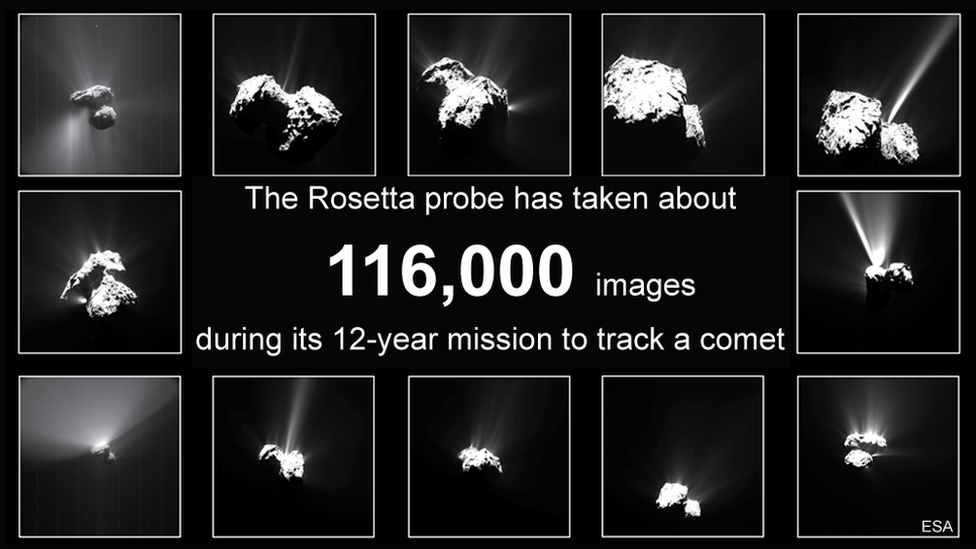
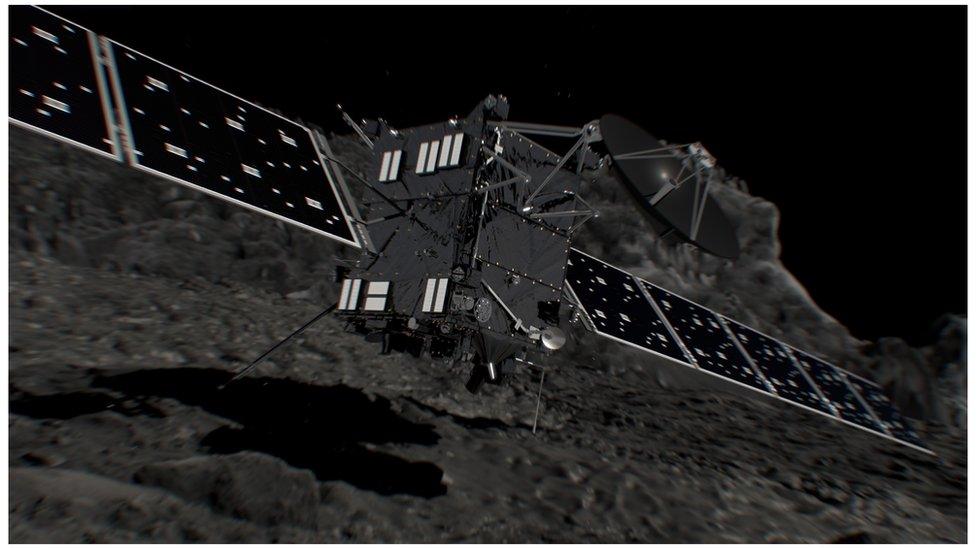
Artwork: How Rosetta might have looked just before it hit the surface
Rosetta arrived at 67P in August 2014, after a 10-year journey from Earth.
In the time it has lived alongside the mountainous object, it has unlocked the secrets about its behaviour, its structure and chemistry.
Rosetta even dropped a small robot called Philae on to the surface in November 2014 to gather additional information - a historic first in space exploration.
The European Space Agency says the mission has been an outstanding success and will transform our understanding of the huge icy dirt-balls that wander among the planets.
The American scientist Alan Stern, whose Alice instrument has made far-ultraviolet observations of the comet to study composition and activity, said all the science teams involved still had much work to do: "We've got 70,000 spectra; we've barely scratched the surface in terms of looking at the data."

At 15.5km from the surface - the head of the duck is in full view

At 11.7km from the surface, a lot of texture is evident in the icy, dusty cometscape
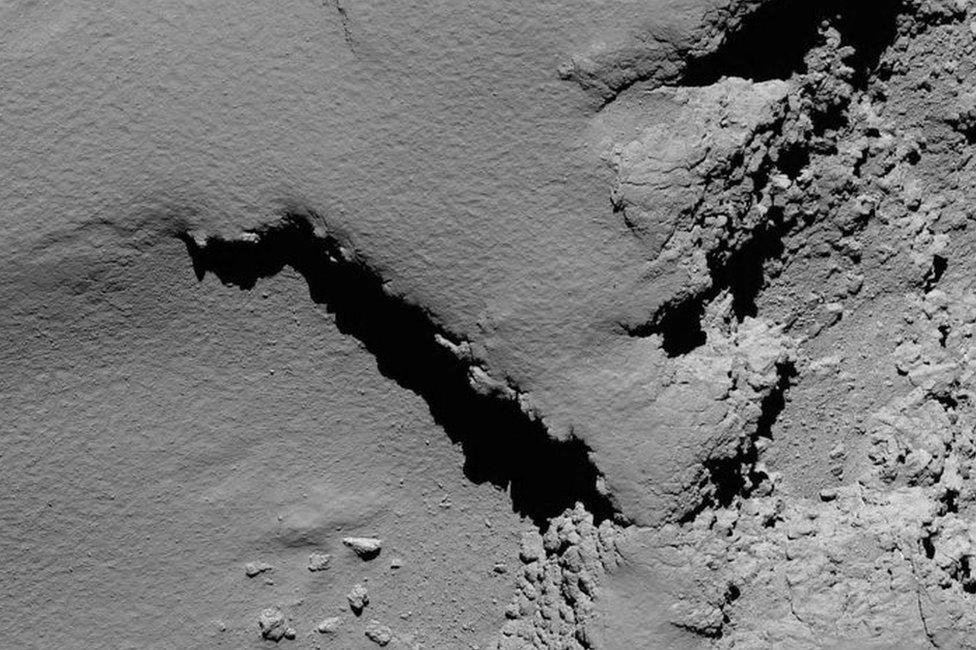
At 5.8km away, the smooth plain contrasts with a rubble field

A mere 1.2km from 67P, individual boulders come into sharp relief
Jonathan.Amos-INTERNET@bbc.co.uk, external and follow me on Twitter: @BBCAmos, external